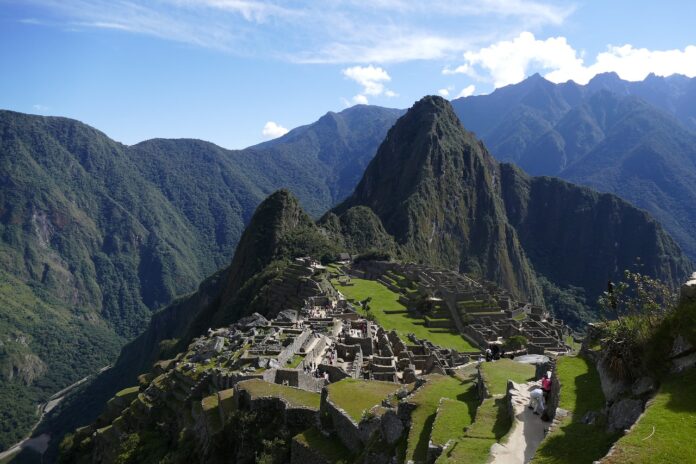“Why is everyone so interested in Machu Picchu? The thing is, archaeologists worldwide are amazed by the perfect construction of buildings and roads in this city, where not a single blade of grass can grow between the stones. And how the Incas, who didn’t know the wheel, managed to drag such heavy stones (weighing up to 200 tons) to such a great height, still remains a mystery.
Moreover, the mystery of the mysterious disappearance of the people who inhabited this city has still not been solved. And here they also discovered a strange artifact – the Intihuatana stone. In this article, we will reveal the most interesting facts about Machu Picchu, the impregnable fortress of the Incas.
The mystery of the Inca’s heavenly city
It is located at an altitude of over 2,500 meters above sea level and is called the “cloud” and “heavenly” city. It has a complex structure consisting of many levels connected by three thousand steps. Many researchers believe that this structure was the residence of Pachacutec – the emperor whose reign spanned from 1438 to 1472.
To this day, scientists are not certain of the purpose of the city itself and many of its constructions. Many believe that Machu Picchu was a sanctuary city, consisting of several temples and residences.
When in 1572 the hidden capital of the Incas, Vilcabamba, located 50 km from Machu Picchu, fell to the Spaniards, the city was already deserted. Only some local residents knew about its existence. Machu Picchu was discovered for the world by Professor Hiram Bingham in 1911.
Extraterrestrial construction technology of the city
Machu Picchu is often referred to as a city built in the style of the Inca civilization but with architectural solutions that surpass even modern ones.
Despite being constructed almost entirely by hand, the city proved to be excellently protected from earthquakes. How the Incas managed to carve out and then drag stone blocks weighing up to 50 tons and fit them so tightly together remains a mystery to this day.
However, thanks to this inexplicable construction technique, even during earthquakes, the stone blocks only sway slightly, without compromising the stability of the entire structure. Earthquakes in Peru are not uncommon and are often quite strong.
Machu Picchu has a complex organizational structure. Palatial buildings are located in the southeast of the city. In the west, there is the main temple with a platform for ritual sacrifices. In the east, there is a complex of two-story residential houses. Between them lies a labyrinth of streets, often leading to dead ends or to a terrace beneath which a chasm opens up.
Strange artifacts
One of the artifacts of Machu Picchu is the Intihuatana stone, which is a single granite monolith. It is located on the top of the “Sacred Hill,” surrounded by man-made terraces. The special placement of the relic attests to its significant role for the Incas.
Interesting fact: ritual stones similar to this one have been found in many places in South America. The Intihuatana stone is designed to point directly at the sun during the spring and winter solstices. On these days, at noon, the sun is positioned directly above the stone, and it casts no shadow.
Because the conquistadors never found Machu Picchu, the Intihuatana stone was spared the fate of other ritual stones of South American peoples, which were destroyed or demolished by the Spanish.
According to some legends, even a person with slight extrasensory abilities, by touching their forehead to the Intihuatana stone, can glimpse into the world of spirits.
According to researchers of Machu Picchu, the population of the city numbered over a thousand people. And suddenly they all disappeared somewhere. The question of where exactly all these people could have vanished in such a short period of time still remains open.
Versions of the disappearance of the population of Machu Picchu:
Some scientists put forward a theory that the population of Machu Picchu was attacked by other indigenous tribes. Others believe that the inhabitants left the city and hid somewhere, fearing capture by Spanish conquistadors. However, the prevailing hypothesis today is the death of the Incas from a smallpox epidemic.
According to historical facts, the smallpox virus was brought to Peru by the conquistadors. As a result of the epidemic that ensued, by 1548, more than half of the population of this country had died. So, this explanation for the abandonment of Machu Picchu has a quite plausible basis.
Today, the city of Machu Picchu is accessible to tourists year-round. Of course, the territory experiences changing seasons of drought and rain, but the daytime temperature remains constant, ranging from +23 to +27 degrees Celsius. However, at night, temperatures can occasionally drop to -1 degree Celsius.
